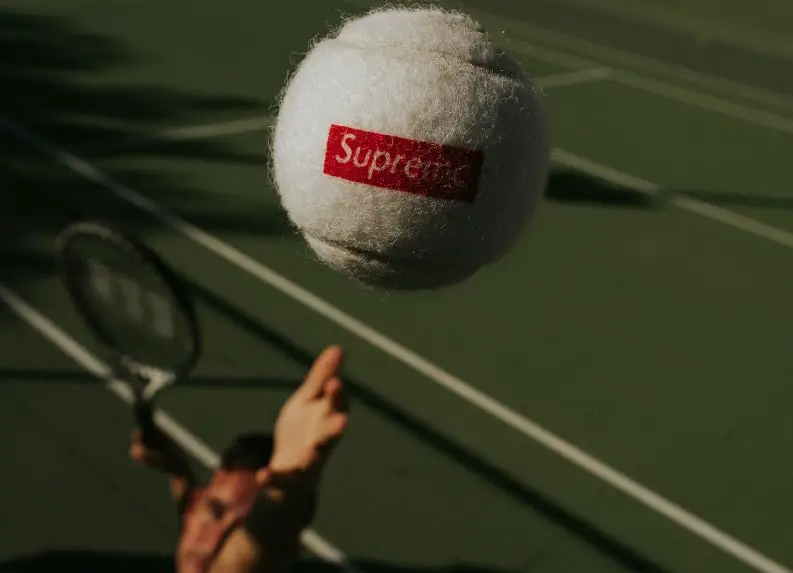Tennis balls are synonymous with the yellow color, or as they call it, the optic yellow color but it’s interesting to note they were not always of the same color. In this piece below we explore the transition in the tennis ball color over the years.
In 2018, there was a huge internet debate over the color of the tennis ball. While most saw it as yellow, a sizable number said it was green. Even Roger Federer became a part of the discussion, as he said, “It’s yellow, right?”
OKAY ITS OFFICIAL MY DAD JUST ASKED @rogerfederer IF TENNIS BALLS ARE YELLOW OR GREEN AND HE SAID THEY ARE YELLOW pic.twitter.com/EXdXRr0oFa
— Delaney Dold (@delaneyanndold) March 19, 2018
That probably was the end of discussion for most tennis fans, particularly the ones who have worshipped the Swiss legend for over two decades, but many remained perplexed; still finding it hard to call the ball “yellow” when they clearly saw it as “green”.
A number of experts have weighed in on the issue, with many believing that the reason why people see the color differently is because the color of the ball lies somewhere in between yellow and green, and since it has been found that our brains perceive colors differently, some people see the tennis ball as greenish yellow, while some experience it as yellowish green.
So how you see the color of the ball is more or less guided by how your brain perceives the color, but were tennis balls always fluorescent yellow? The answer to this is no. Here we try to find out why and when the color of tennis balls was changed to yellow.
Table of Content
History of Tennis Balls
Tennis, also known as lawn tennis in Britain, is said to have its roots in the French sport of Jeu de paume (or the game of palm), which originated around the 13th century.
A ball game played on court with hands, Jeu de paume led to the creation of a racket sport called “real tennis,” which looks like a mix of tennis and squash. The ancient sport was popular for centuries before slowly making way for modern tennis in the 1870s.
It is hardly played these days, but there are a few “real tennis” courts that still exist around the world and give sports enthusiasts an opportunity to try their hand at the original form of the game.
Known as real tennis in Britain, court tennis in the United States, and royal tennis in Australia, the sport, too, requires two to four players to compete against each other by hitting a ball across a net.
Also Read:
- Is There a Dress Code for Tennis Players & Spectators?
- Why do Tennis Players Check the Ball Before Serving?
It’s very similar to modern day tennis but uses a different scoring pattern, and the look of the court and its size differ as well.
The ball used in real tennis was also different as it was originally said to be made of wood and later, of leather with saw dust stuffed in it. There is also evidence of the ball being composed of wool, chalk, animal fur and human hair.
It was in the 1850s when Charles Goodyear came up with balls made of vulcanized rubber. Rubber balls bounced more and also had more speed. It was this invention which made modern day tennis possible. A German group soon developed air-filed rubber balls, which were red or grey in color and didn’t have a covering.
Being made of rubber, the balls had a problem of wearing down soon. To address the issue, they were later covered with fabric, while the rubber core was retained.
In the earlier days, the core was manufactured using “clover-leaf” principle: A rubber sheet was stamped to give it a shape resembling a three-leaf clover and then assembled into a spherical ball by machines.
These days, manufacturers create two half shells through compression molding of rubber and then combine them to create a ball.
History of the Color of the Tennis Ball

For over a century, the fabric used to cover the rubber core was either black or white depending on the background color of the court.
The white balls were more popular and they continued to remain in existence till the close of the 20th century, eventually making way for the yellow balls to take over.
The man who is credited for playing a major role in the transformation of the color of the tennis ball is famous British documentarian David Attenborough.
He was a studio controller at the BBC in the 1960s and it was due to his efforts that the BBC broadcasted the Wimbledon in color in 1967. It was a revolutionary change that transformed the sport for good. The sport became more attractive and marketable, and drew a lot more fans.
Here is a clip from one of the earliest known color broadcast of Wimbledon on TV:
But the white ball presented its own challenge as it became difficult for viewers to track the ball on color TV. Therefore, the International Tennis Federation (ITF) undertook a study in quest to find the best color for the ball that would enhance the viewer experience on TV.
The study found that yellow would be an ideal choice for tennis matches and in 1972, the ITF changed rules to make it mandatory for all tennis balls to be either yellow or white. It also made it mandatory for tennis balls to have a uniform surface.
Also Read:
- Why do Tennis Players Opt to Receive the Serve after Toss?
- Why do Tennis Players Blow on Their Hands?
While tournaments around the world started embracing yellow balls, Wimbledon didn’t immediately do away with the white balls, perhaps they didn’t want to tinker with history, but eventually they too adopted the yellow balls in 1986, probably because of the ever-growing TV viewership.
It is much easier to keep a track of the yellow ball on TV and they don’t get lost against white backgrounds, and it also helps when they are close to the baseline or the tram lines, which are painted in white.
While yellow balls became popular, some manufacturers didn’t stop the production of white balls, albeit in much smaller quantities, and in the early 1990s there were even whispers of white balls being reintroduced on a wider scale.
But that idea didn’t find support from players and fans, who were much more comfortable with the yellow ball.
According to the ITF, a standard modern ball should have a diameter of 2.575 inches to 2.7. inches and it must weigh between 56 grams and 59.4 grams.
There are more than 150 different brands of tennis balls approved by the ITF, with Wilson and Penn being two of the most popular manufacturers.
Final Words on the Tennis Ball Evolution
The tennis ball has evolved in multiple ways including its color which at some point was black and then white before it was converted into its current optic yellow color. A lot of this has had to do with how the ball looks on television and with improving technology, inventors have had to change the color of a tennis ball around as a result as well.


